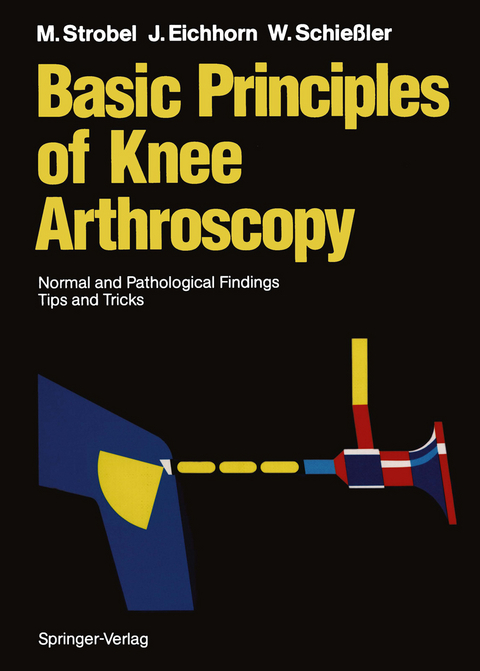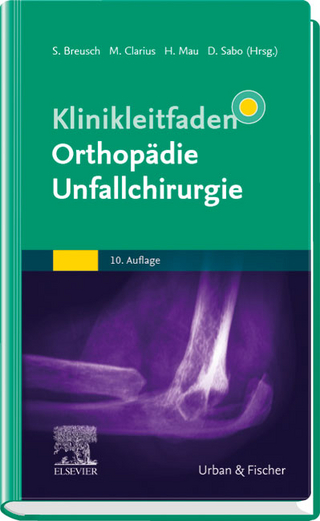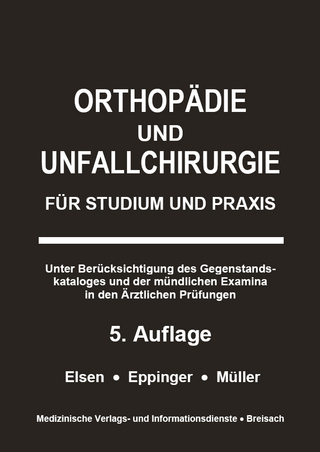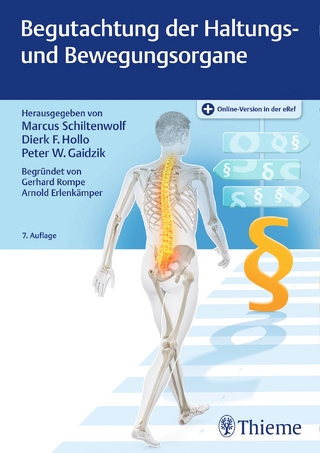
Basic Principles of Knee Arthroscopy
Springer Berlin (Verlag)
978-3-642-76331-1 (ISBN)
1 Historical Background.- 1.1 Early Instruments for Endoscopic Examinations.- 1.2 Eugen Bircher.- 1.3 Kenji Takagi.- 1.4 Development of Diagnostic Arthroscopy.- 1.5 Development of Arthroscopic Surgery.- 1.6 Outlook.- 2 Indications for Arthroscopy of the Knee Joint.- 2.1 Diagnostic Indications.- 2.2 Therapeutic Indications.- 2.3 Contraindications to Arthroscopy.- 3 Equipment.- 3.1 Arthroscope.- 3.2 Lighting System.- 3.3 Video System.- 3.4 Arthroscopic Media.- 3.5 Irrigation System.- 3.6 Probing Hook.- 4 Preparation of the Patient and Equipment.- 4.1 Anesthesia.- 4.2 Positioning.- 4.3 Bloodless Field.- 4.4 Draping.- 4.5 Equipment Preparation and Layout.- 4.6 Facilities.- 4.7 Care and Maintenance or Arthroscopic Instruments.- 4.8 Basic Equipment Requirements.- 5 Preoperative Examination under Anesthesia.- 6 Portals.- 6.1 Arthroscope Portal.- 6.2 Instrument Portals.- 7 Basic Principles of Arthroscopy.- 7.1 Movements of the Arthroscope.- 7.2 Position of the Light Post.- 7.3 Movements of the Knee.- 7.4 Direct Manual Maneuvers.- 7.5 Orientation.- 7.6 Principle of Triangulation.- 7.7 Rendezvous Technique.- 8 Examination Procedure - Normal and Pathologic Findings.- 8.1 Retropatellar Space.- 8.2 Suprapatellar Pouch.- 8.3 Lateral Recess.- 8.4 Femoropatellar Joint.- 8.5 Anteromedial Capsule.- 8.6 Medial Compartment.- 8.7 Intercondylar Area.- 8.8 Moving the Leg to the Figure-4 Position.- 8.9 Lateral Compartment.- 8.10 Summary.- 8.11 Completing the Examination.- 9 The Articular Cartilage - Normal and Pathologic Findings.- 9.1 Normal Findings.- 9.2 Chondromalacia.- 9.3 Degenerative Changes.- 9.4 Traumatic Cartilage Lesions.- 9.5 Osteochondritis Dissecans.- 10 The Synovium - Normal and Pathologic Findings.- 10.1 Normal Findings.- 10.2 Posttraumatic Synovial Changes.- 10.3 Synovial Changes in Rheumatoid Arthritis.- 10.4 Pigmented Villonodular Synovitis (PVNS).- 10.5 Gout and Chondrocalcinosis.- 10.6 Synovitis Secondary to Psoriasis.- 10.7 Postarthrotomy Changes and Reactions to Implants.- 10.8 Synovial Chondromatosis.- 11 Problems in Arthroscopy.- 11.1 Poor-Quality Monitor Image.- 11.2 Inadequate Joint Distention.- 11.3 Yellow-Out.- 11.4 Red-Out.- 11.5 No Picture.- 11.6 Extravasation of Irrigating Fluid.- 11.7 Inadequate Visualization of the Joint Compartments.- 11.8 Visualization of the Posterior Horn of the Medial Meniscus.- 12 Complications.- 12.1 Articular Cartilage Damage.- 12.2 Carrying Particles of the Incise Drape into the Joint.- 12.3 Instrument Breakage.- 12.4 Nerve Injuries.- 12.5 Vascular Injuries.- 12.6 Ligament and Bone Injuries.- 12.7 Infection.- 12.8 Compartment Syndrome.- 12.9 Hemarthrosis and Postoperative Effusion.- 12.10 Thromboembolitic Complications.- 12.11 Synovial Fistula, Synovial Hernia.- 12.12 Reflex Sympathetic Dystrophy.- 12.13 Skin Complications.- 12.14 Lost Tissue Fragments.- 12.15 Special Complications of Gas Arthroscopy.- 12.16 Arthroscopy of the "Wrong" Knee.- 12.17 Other Rare Complications.- 12.18 Late Complications.- 13 Patient Information.- 13.1 Selecting Patients for Arthroscopy.- 13.2 Preoperative Patient Conduct.- 13.3 Preoperative Interview.- 13.4 Postoperative Consultation.- 14 Documentation.- 14.1 Written Documentation.- 14.2 Photographic and Video Documentation.- 15 Training in Arthroscopy.- 15.1 Attending an Arthroscopic Course or Workshop.- 15.2 Practice on a Knee Model.- 15.3 Visiting an Experienced Arthroscopist.- 16 Spectrum of Arthroscopic Surgery.- 16.1 Advantages and Disadvantages of Arthroscopic Surgery.- 16.2 Arthroscopic Surgical Instruments.- 16.3 Arthroscopic Surgery.- References.
| Erscheint lt. Verlag | 7.1.2012 |
|---|---|
| Übersetzer | T.C. Telger |
| Vorwort | Willemijn M. Klein |
| Zusatzinfo | XIII, 253 p. 99 illus. |
| Verlagsort | Berlin |
| Sprache | englisch |
| Maße | 193 x 270 mm |
| Gewicht | 604 g |
| Themenwelt | Medizinische Fachgebiete ► Chirurgie ► Unfallchirurgie / Orthopädie |
| Medizin / Pharmazie ► Medizinische Fachgebiete ► Notfallmedizin | |
| Schlagworte | Arthroskopie • Knee-Arthroscopy-diagnostic • Knee-Arthroscopy-investigative • Knee-Arthroscopy-surgical • trauma surgery |
| ISBN-10 | 3-642-76331-6 / 3642763316 |
| ISBN-13 | 978-3-642-76331-1 / 9783642763311 |
| Zustand | Neuware |
| Informationen gemäß Produktsicherheitsverordnung (GPSR) | |
| Haben Sie eine Frage zum Produkt? |
aus dem Bereich


